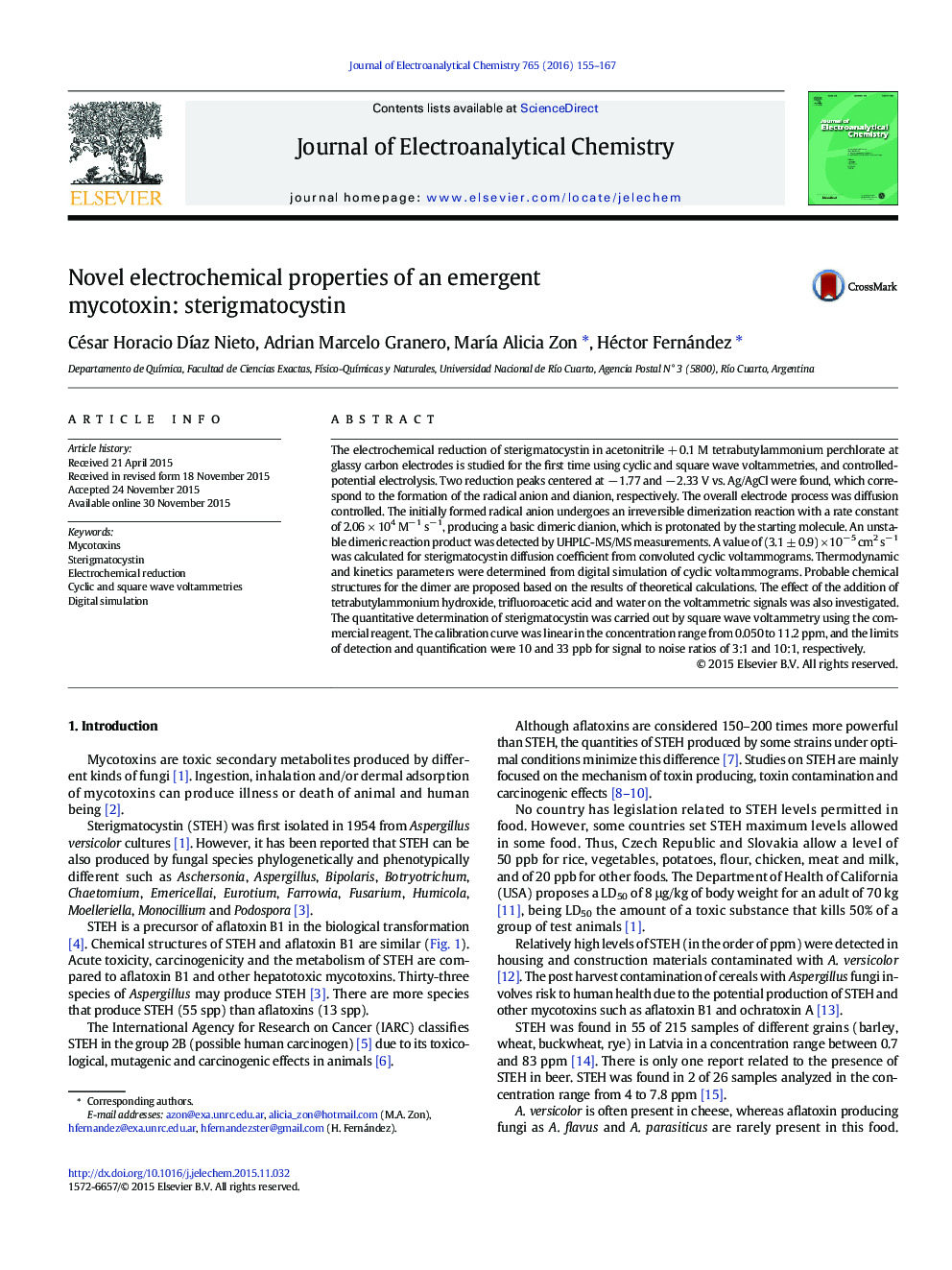| Article ID | Journal | Published Year | Pages | File Type |
|---|---|---|---|---|
| 218048 | Journal of Electroanalytical Chemistry | 2016 | 13 Pages |
•The electrochemical reduction of sterigmatocystin is studied at glassy carbon electrodes.•A complex electro-reduction mechanism can be inferred.•A probable electro-reduction mechanism in a non-aqueous medium is proposed.•Thermodynamic and kinetics parameters are calculated.•Square wave voltammetry is used to determine sterigmatocystin.
The electrochemical reduction of sterigmatocystin in acetonitrile + 0.1 M tetrabutylammonium perchlorate at glassy carbon electrodes is studied for the first time using cyclic and square wave voltammetries, and controlled-potential electrolysis. Two reduction peaks centered at − 1.77 and − 2.33 V vs. Ag/AgCl were found, which correspond to the formation of the radical anion and dianion, respectively. The overall electrode process was diffusion controlled. The initially formed radical anion undergoes an irreversible dimerization reaction with a rate constant of 2.06 × 104 M− 1 s− 1, producing a basic dimeric dianion, which is protonated by the starting molecule. An unstable dimeric reaction product was detected by UHPLC-MS/MS measurements. A value of (3.1 ± 0.9) × 10− 5 cm2 s− 1 was calculated for sterigmatocystin diffusion coefficient from convoluted cyclic voltammograms. Thermodynamic and kinetics parameters were determined from digital simulation of cyclic voltammograms. Probable chemical structures for the dimer are proposed based on the results of theoretical calculations. The effect of the addition of tetrabutylammonium hydroxide, trifluoroacetic acid and water on the voltammetric signals was also investigated.The quantitative determination of sterigmatocystin was carried out by square wave voltammetry using the commercial reagent. The calibration curve was linear in the concentration range from 0.050 to 11.2 ppm, and the limits of detection and quantification were 10 and 33 ppb for signal to noise ratios of 3:1 and 10:1, respectively.
